Mango curd is a simple, tropical alternative to lemon curd but just as creamy and moreish. All you'll need is fresh mangoes, sugar, eggs and butter.

You might think that making mango curd is tricky, since it can't be juiced as simply as, say, a lemon, but in fact, all you need to do is whizz ripe mango up in a blender and a then push it through a sieve to remove the more fibrous bits of pulp.
Next, you'll pop it in a bowl with eggs, butter and sugar and heat gently until thickened. When you can drag your finger through the coating on a spoon and leave a trail - it's done!

I love to make a big jar of this mango curd and have it in the fridge, ready to use in all sorts of ways.
It's wonderful on toast, swirled into yogurt or porridge, used to top cheesecakes and even to make mango curd tarts! I've also been known to grab a sneaky spoonful from the fridge on its own when I fancy a quick hit of fruity sweetness!
Read on for the full recipe with detailed instructions and a helpful photograph for every step. And if you have any questions, just leave me a comment. Enjoy!
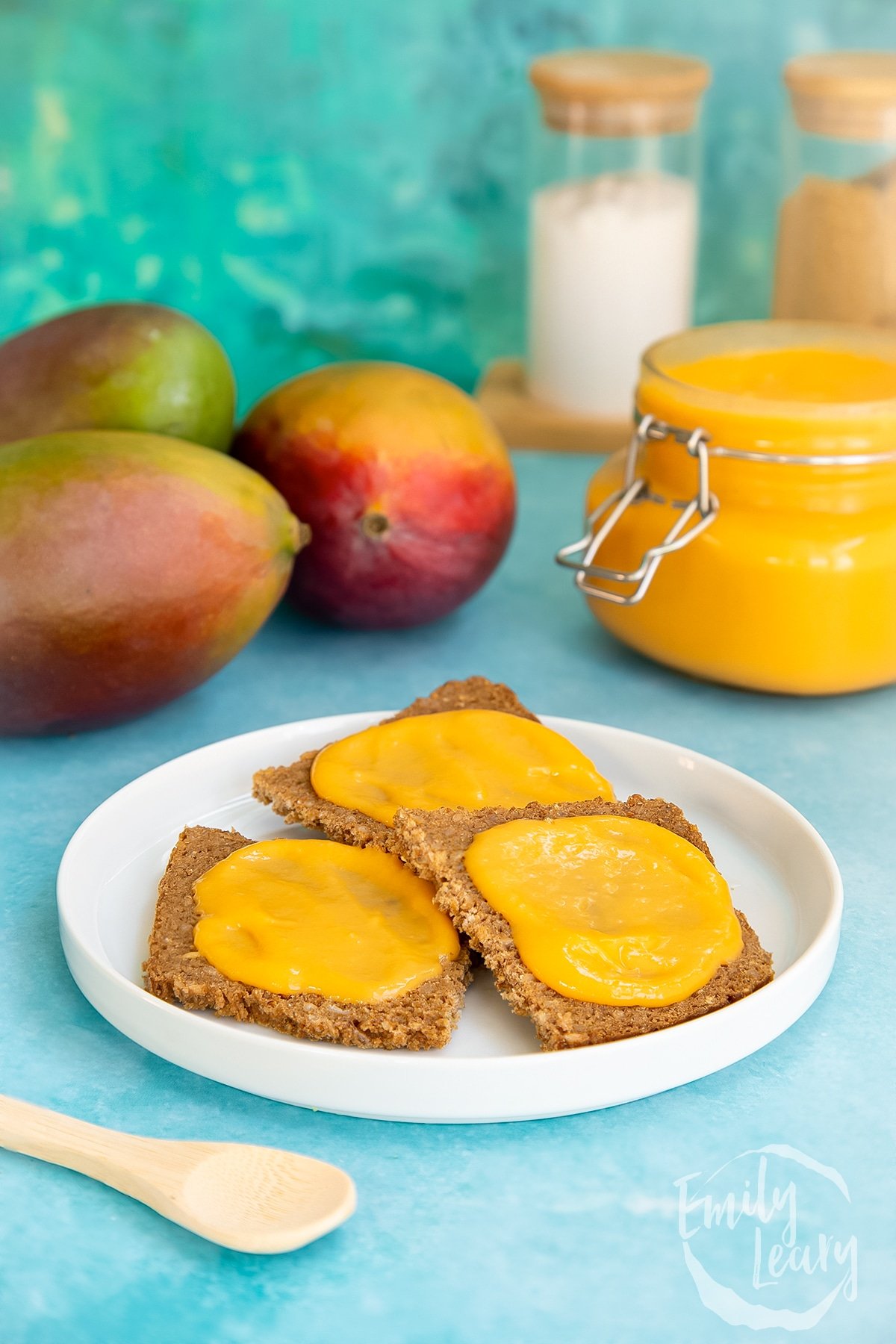
Ingredients
- 400 g (14 oz) mango flesh
- 200 g (1 cup + 2 tbsp) white caster sugar (superfine sugar)
- 100 g (7 tbsp) salted butter
- 4 medium free range eggs
- 1 egg yolk
Equipment
- Large heatproof bowl
- 500ml (17 oz) jar sterilized
Instructions
Place the mango flesh in a bowl,

Puree with a stick blender.
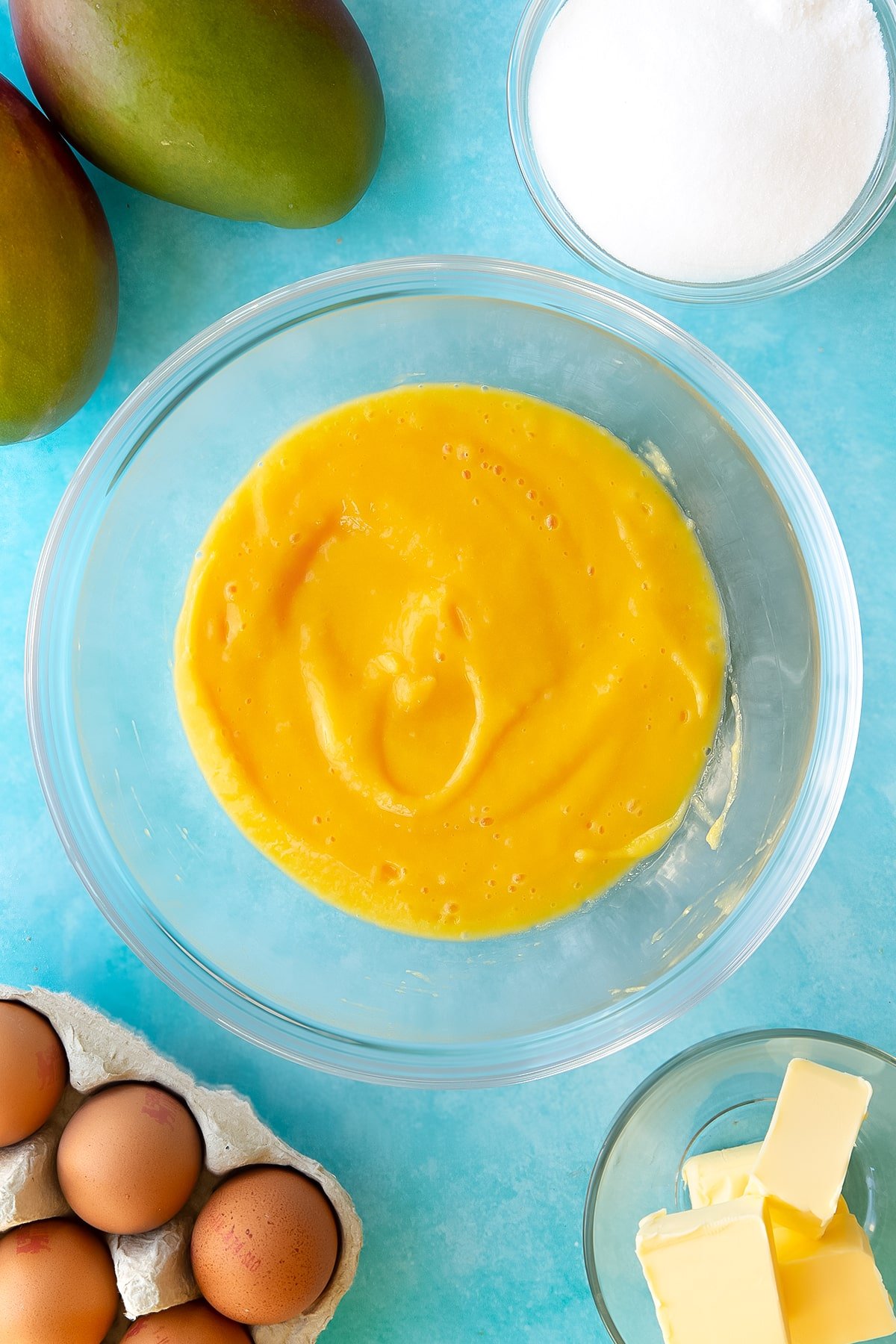
Put a sieve over a clean, heatproof bowl and tip the puree into it.
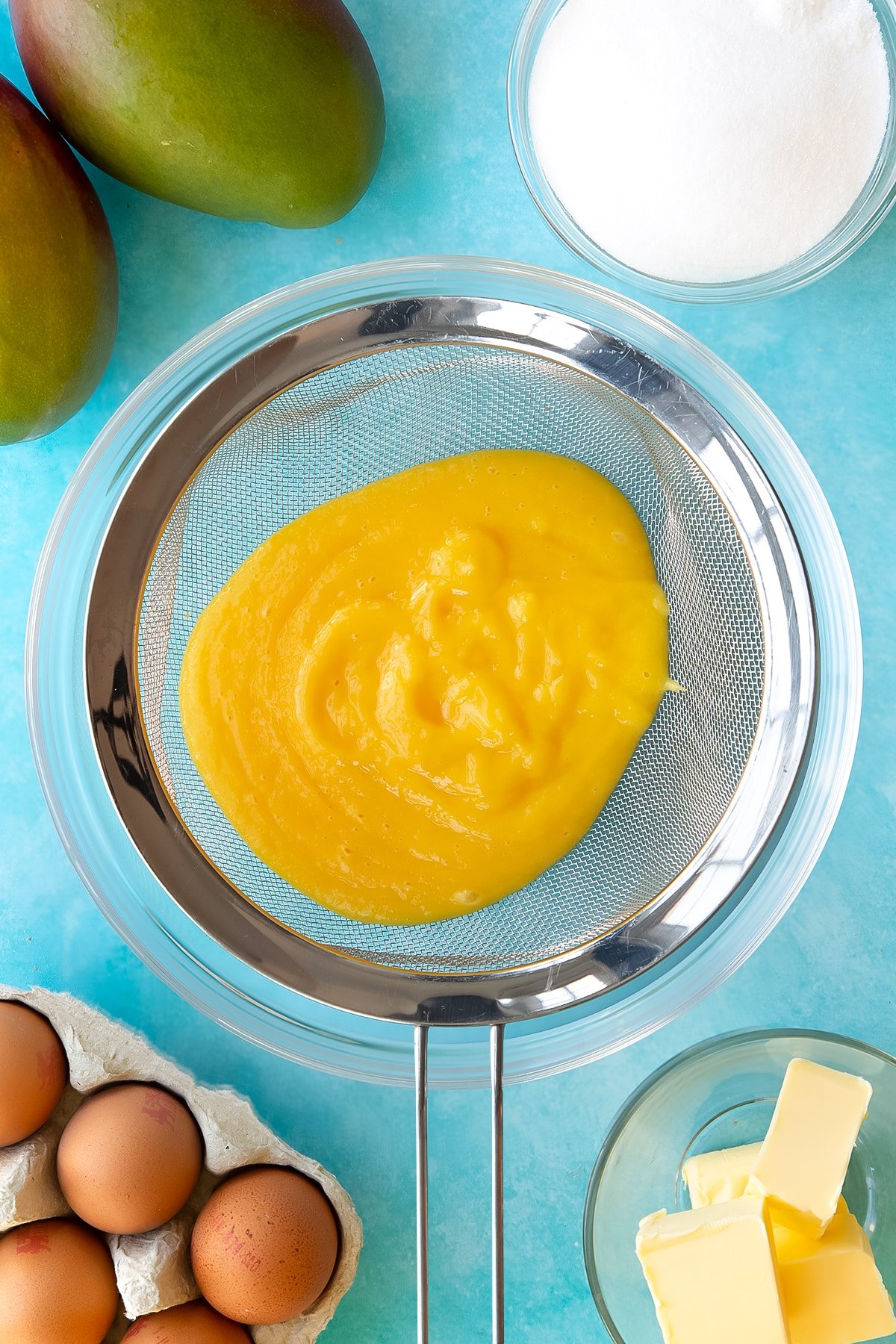
Press with the back of a spoon.
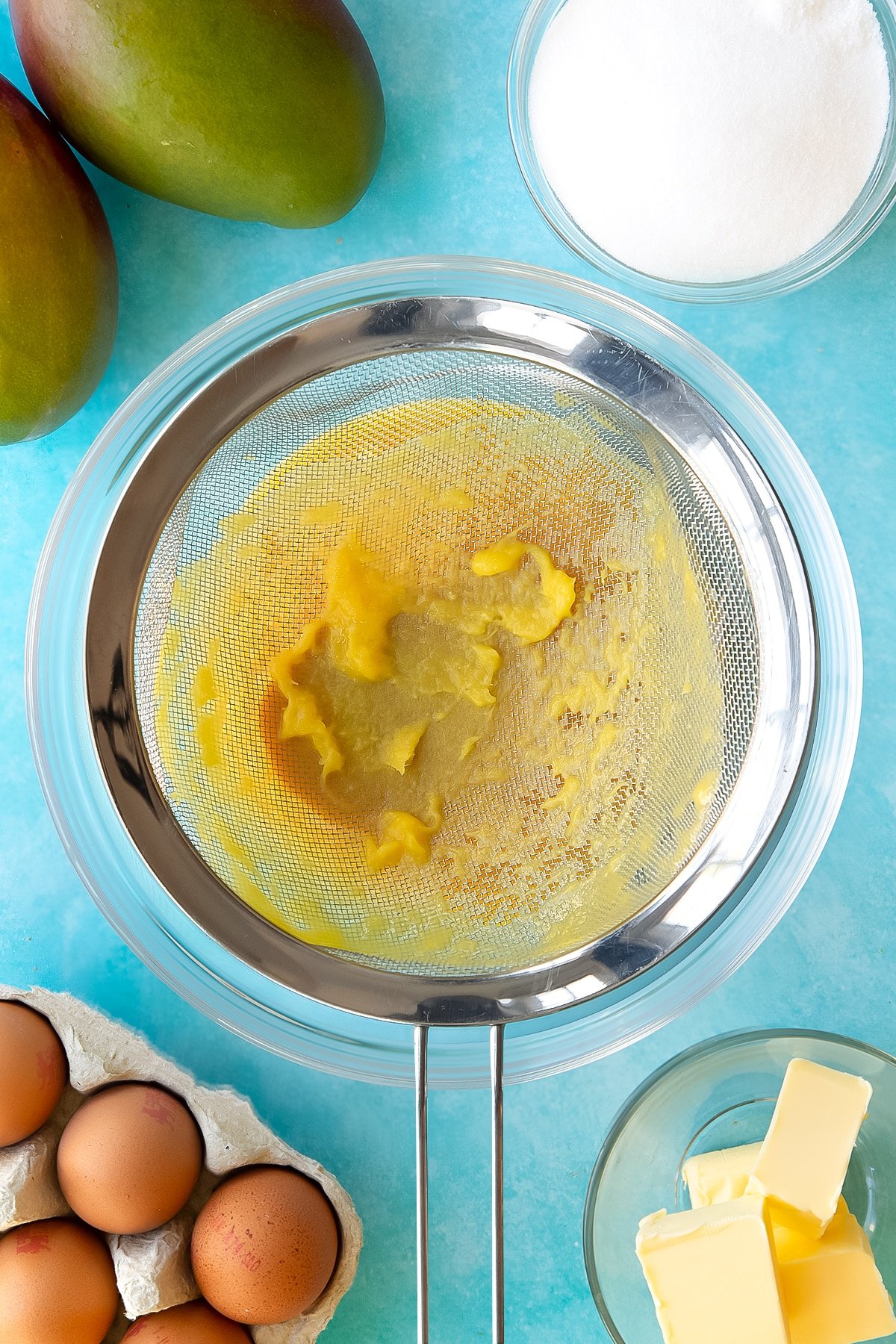
The fine puree will pass through but the fibrous parts remain in the sieve.

Stand the bowl of mango puree over a pan containing an couple of centimetres (1 inch) of simmering water.
Add the butter and sugar.
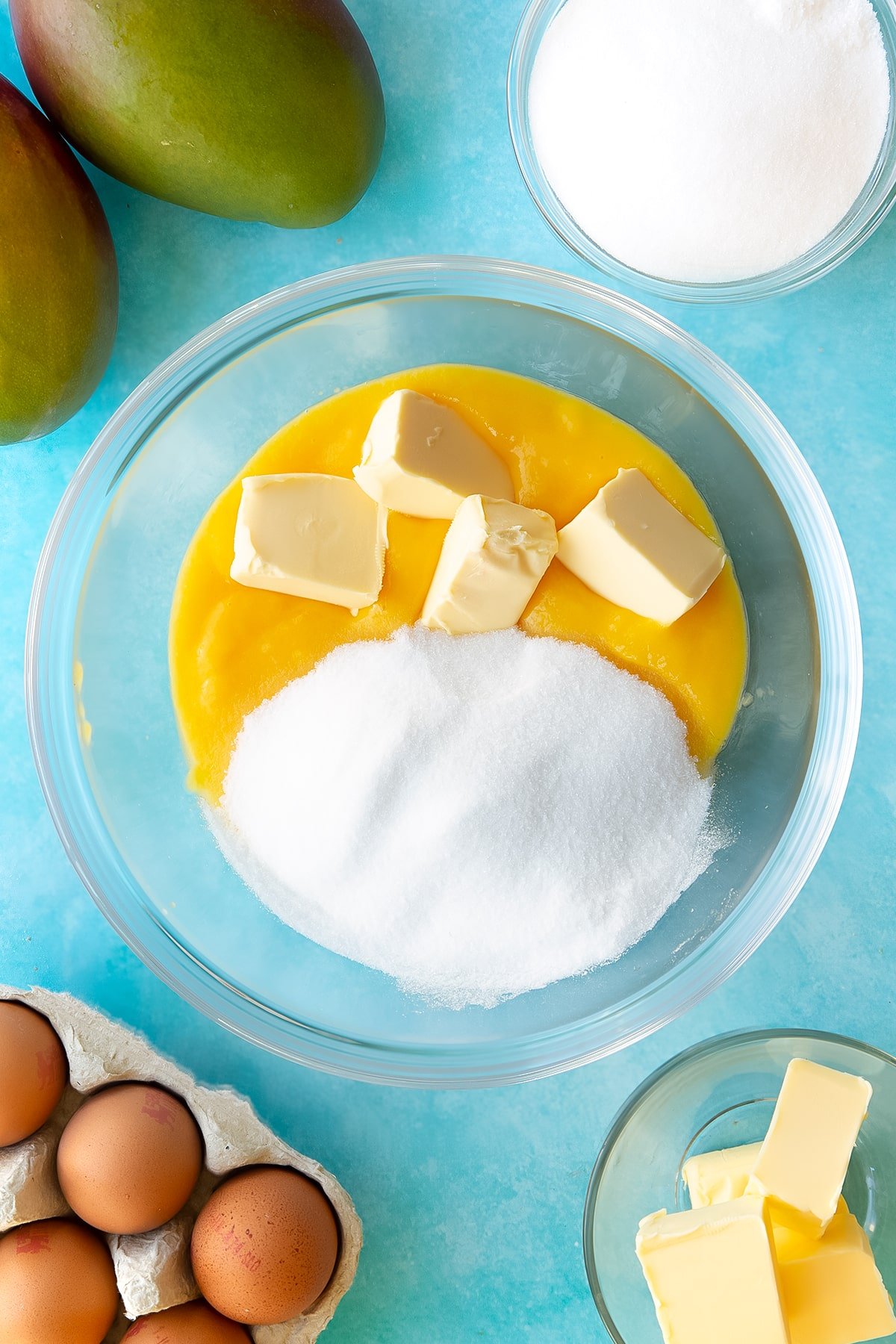
Stir gently until everything has dissolved together.

Add the room temperature beaten eggs.

Whisk immediately so that it doesn't scramble.

Continue to heat over the pan, whisking regularly until it has thickened enough to leave a trail if you run your finger over the back of the spoon.

Transfer to a 500ml (17 oz) jar.
It will thicken as it cools and set in the fridge, where you can keep it for up to 2 weeks.

Once you've given my recipe a go, I'd love you to come back and leave a comment letting me know how yours turned out.
I'd love to see your videos and pics, too! Just tag me on social media. I'm @emilylearycooks on Twitter and TikTok or @amummytoo on Instagram.
Print this mango curd recipe
Mango Curd Recipe
Ingredients
- 400 g (14 oz) mango flesh
- 200 g (1 cup + 2 tbsp) white caster sugar (superfine sugar)
- 100 g (7 tbsp) salted butter
- 4 medium free range eggs
- 1 egg yolk
Equipment
- Large heatproof bowl
- 500ml (17 oz) jar sterilized
Instructions
- Place the mango flesh in a bowl and puree with a stick blender.
- Put a sieve over a clean, heatproof bowl and tip the puree into it. Press with the back of a spoon so that the fine puree passes through but the fibrous parts remain in the sieve.
- Stand the bowl of mango puree over a pan containing an couple of centimetres (1 inch) of simmering water.
- Add the butter and sugar. Stir gently until everything has dissolved together.
- Add the room temperature beaten eggs and whisk immediately so that it doesn't scramble.
- Continue to heat over the pan, whisking regularly until it has thickened enough to leave a trail if you run your finger over the back of the spoon.
- Transfer to a 500ml (17 oz) jar.
- It will thicken as it cools and set in the fridge, where you can keep it for up to 2 weeks.
Nutrition
More mango recipes to try!
More curd recipes to try!
Have you got my book?

'This is a great kids cookery book. Emily is a star' - Simon Rimmer
'The book I'd like to force into any mother's kitchen' - Prue Leith
"A fab book with a plan." - Jane Devonshire, 2016 Masterchef UK winner
'Emily has managed to combine her mummy knowledge and passion for food to make a truly helpful and brilliant cookbook' - Priya Tew, RD, BSc (Hons), Msc
Get Your Kids to Eat Anything is an achievable 'how to' for parents in the battle to overcome picky eating and 'make new the norm'. Emily Leary's unique 5-phase programme looks at the issue of 'fussy eating' in a holistic way that links imagination with food, and which situates parents alongside - not in opposition to - their children.


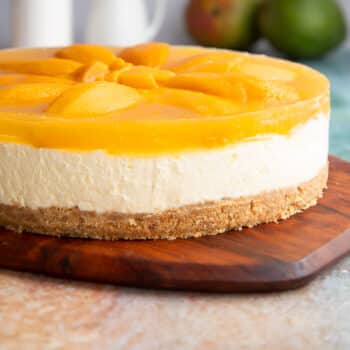


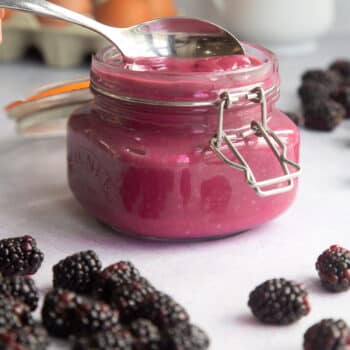
Louise Douglas says
Wondering if using frozen mango is what made this not set? But that was the only thing I did different and it was still very runny, waited overnight it didn't set. Was nothing like my lemon curd recipe. My lemon curd one only uses egg yolks not full eggs like this one, would that be the problem?
Emily Leary says
You didn't follow the recipe as you changed the main ingredient, the mango. If you do that, it's not the recipe's fault if it doesn't turn out as described, so I've removed your star rating.
I haven't tried using frozen mango, but fruit cells have rigid cell walls that hold water (and other stuff). When you freeze fruit, ice crystals form and cause the cells to burst, so that's probably why your curd was runny.